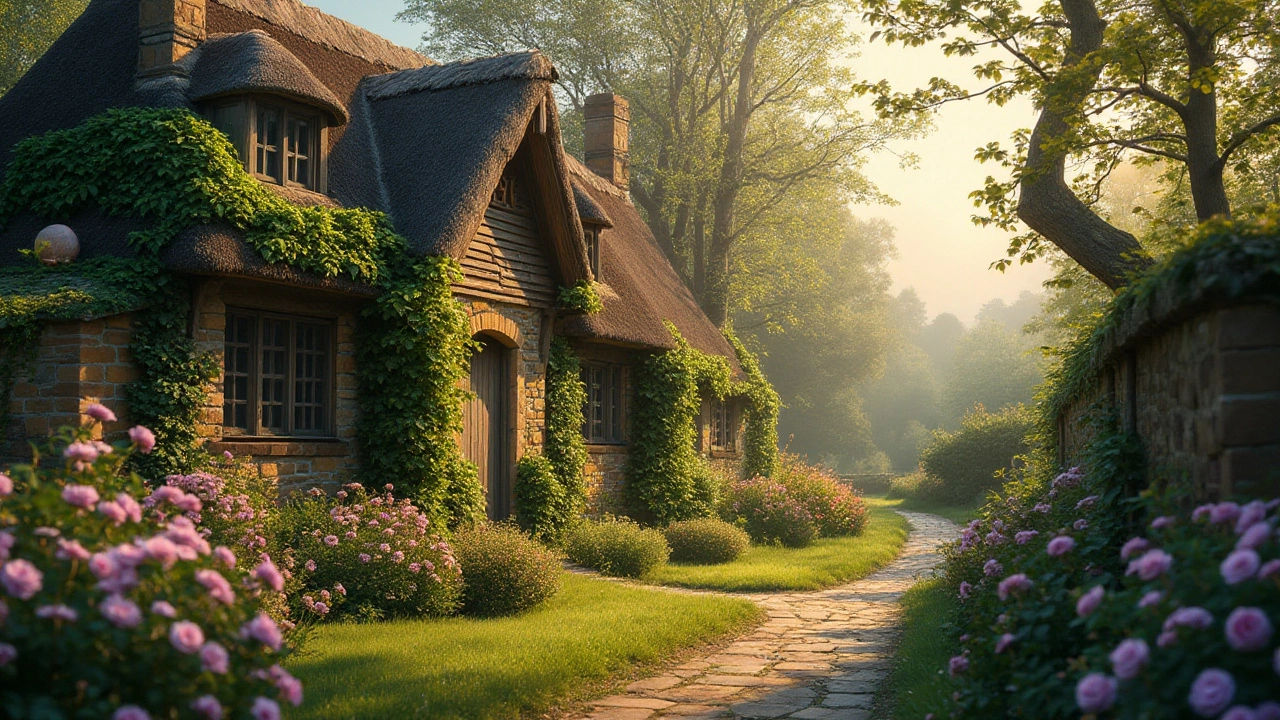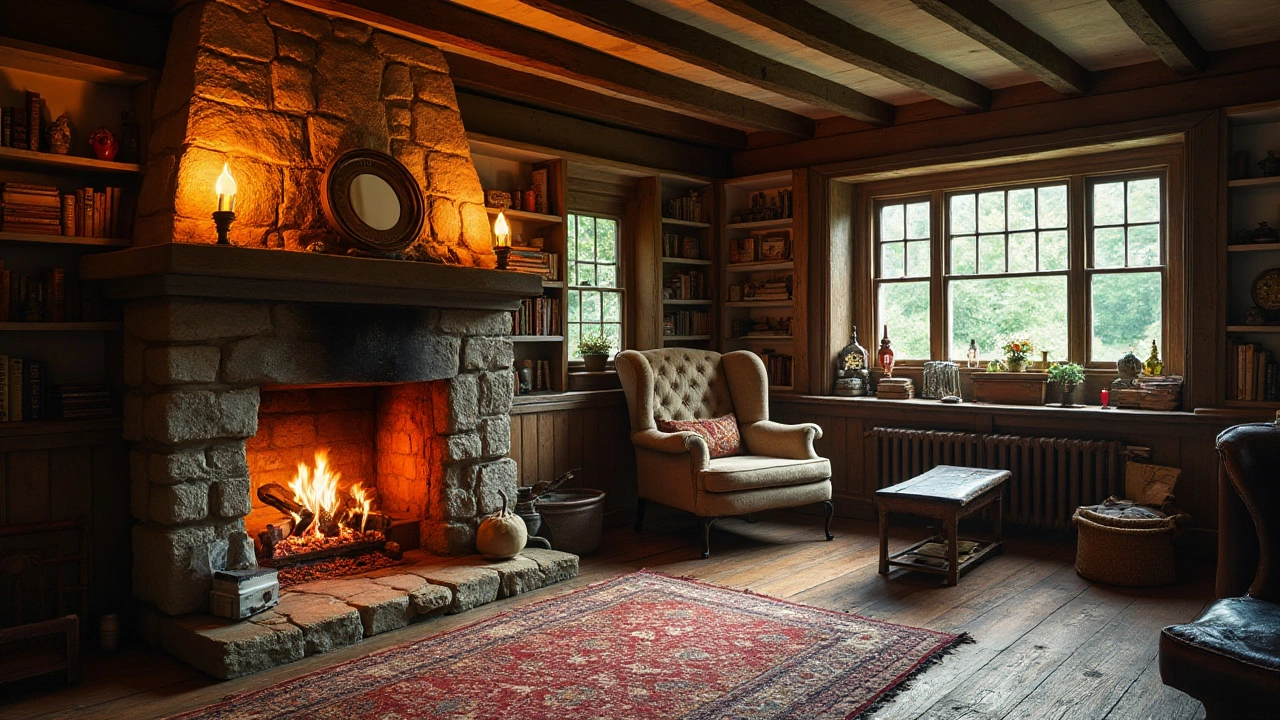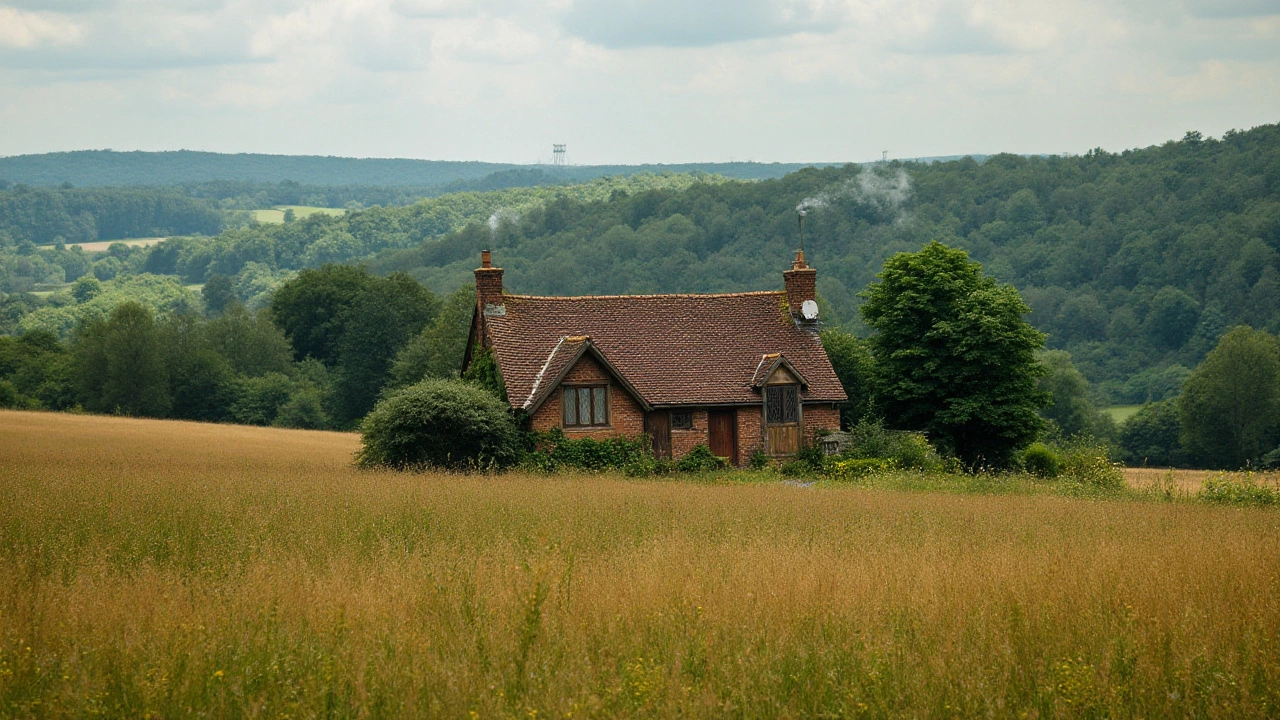Exploring the Charm of Rural Cottages: What Defines a Perfect Cottage?

In a world that's always racing forward, there’s something uniquely calming about stepping into a cottage. These charming abodes serve as a timeless antidote to the hustle and bustle of modern life. But what exactly makes a home a cottage? It's more than just size or location; it's a blend of aesthetic charm, historical presence, and a dash of rustic simplicity.
The allure of cottages lies in their ability to evoke a sense of nostalgia and comfort. Whether nestled in a quiet woodland or perched overlooking a scenic lake, cottages come in many forms. While they often feature rustic designs and cozy interiors, the definition of a cottage can be as diverse as the regions they inhabit.
Join us as we delve into the delightful world of cottages, exploring the features that define these beloved homes. From their distinctive architectural details to the elements that make them feel so uniquely inviting, we'll uncover why cottages continue to be cherished retreats for those who seek a simpler, quieter way of life.
- Architectural Features of Cottages
- Ideal Locations for Cottages
- Materials and Design Elements
- The Cottage Lifestyle
- Tips for Choosing or Building Your Cottage
Architectural Features of Cottages
Diving into the architectural features of rural cottages unveils a quaint world where charm meets simplicity. Typically, a true cottage boasts a modest footprint, one that fits comfortably within its often picturesque surroundings. These homes are celebrated for their steeply pitched roofs, a detail that not only adds to their cozy aesthetic but also serves practical purposes, helping manage snow in colder climates. Dormer windows frequently peek from roofs, adding space and light to typically snug interiors. These elements combined create a distinctive silhouette that echoes the rustic allure of countryside living.
Another striking feature common among cottages is their use of natural materials. You’ll often find that these homes incorporate stone or wood in their construction, often locally sourced, establishing a deep connection to their environment. This choice of materials does more than define the structure; it also weaves an organic warmth into the ambiance of the space, inviting nature inside. Wooden beams might crisscross ceilings, while stone fireplaces command the heart of the living space, offering not just heat, but a historic charm that speaks to a simpler time. Modern variations continue to honor these materials, keeping the rustic integrity intact while adapting to contemporary needs.
Porches, verandas, or patios are another characteristic feature, encouraging an outdoor-indoor lifestyle that has become synonymous with cottage living. These spaces often serve as key social hubs where familial and friendly gatherings unfold, creating memories against the backdrop of serene natural beauty. The modesty of a cottage’s design enhances its connection to the landscape, blending seamlessly with rolling hills, dense woodlands, or sweeping lake views. "Cottages are the epitome of charm paralleling simplicity and intimate connection with nature," states John Stilgoe, Professor of Landscape History at Harvard University.
When examining windows and doors in cottages, functionality partners with beauty. Windows are usually multi-paned, echoing traditional designs that favor smaller, more frequent installations, capturing light from every angle. These windows frame the burgeoning greenery outside or the gentle wave of a nearby sea, embedding an ever-changing canvas of nature within the cottage itself. Doors are often crafted from solid wood, their designs seemingly untouched by the ebb and flow of fleeting architectural trends. They speak to a robustness and authenticity, standing as a final threshold between the warmth of the cottage interior and the natural wonders just beyond.
Finally, the layout of countryside living cottage interiors reflects a desire for intimacy and collaboration. Rooms often flow into one another without rigid separations, allowing inhabitants to glide from kitchen to living room with ease—a design choice that emphasizes shared experiences and communal bonds. This open concept, paired with lower ceilings, imparts an inviting, enveloping sense of coziness that is a quintessential aspect of cottage appeal. By examining these architectural traits, we uncover not only what makes cottages structurally distinctive but also why they persist as treasured retreats for those longing for a break from the frenetic rhythm of city life.
Ideal Locations for Cottages
Finding the perfect spot for a rural cottage is key to embodying that sought-after harmony with nature and the simplicity of countryside living. These charming retreats are nestled in a variety of picturesque landscapes that often set the tone for the quintessential cottage experience. Locations play an instrumental role in defining the character of these dwellings, contributing to the unique charm each one possesses. From serene lakesides to the heart of ancient woodlands, these destinations offer a literal breath of fresh air, far removed from the fast-paced urban sprawl. These locations not only provide stunning backdrops but also become extensions of the home itself, encouraging a lifestyle deeply intertwined with nature and tranquility.
One of the most cherished settings for cottages is near bodies of water—think about the peaceful embrace of a lake or the gentle lull of ocean waves. Lakeside cottages, for instance, can offer a panoramic view right from your porch, with the opportunity for recreational activities like fishing or kayaking just steps away. The appeal of water is universal, providing a serene vista that changes with every season. Another popular choice is to situate cottages in mountainous regions, where the rugged terrain and lush greenery form a natural boundary shielding residents from the bustle of society. The forested locales are equally enticing, offering a canopy of tranquility where wildlife coexists peacefully, adding an authentic touch to the rustic ambiance.
For those who treasure historical charm, villages tucked in the countryside of places like the English Cotswolds or the Loire Valley in France can offer a unique slice of old-world life. These locations provide more than just a setting; they offer a network of winding lanes and historic architecture that tell tales of times gone by. In fact, some cottages in these regions are centuries old, embodying the evolving technique of building traditions while maintaining their essence.
'Cottages are not just homes; they are a bridge to our heritage, a reminder of our connection to the land and its historical permanence,' notes architectural historian Emily Savidge.
A table might perfectly highlight the diverse settings of cottages worldwide, considering elements such as average property prices, climate appeal, and proximity to amenities:
| Location | Average Property Price | Climate Appeal | Proximity to Amenities |
|---|---|---|---|
| The Cotswolds, England | $500,000 | Cool, temperate | Moderate |
| Lakeside, Canada | $300,000 | Cold winters, warm summers | Low |
| Forest Edge, Scandinavia | $350,000 | Cold, refreshing | Low |
| Beachfront, Australia | $600,000 | Warm, sunny | High |
When selecting a location for a potential cottage, it's crucial to consider what kind of setting offers the ambiance you desire. Accessibility, community resources, and climate are significant factors that will shape your daily life. Ultimately, the best location for a cottage is one that resonates with your personal idea of peace and offers a retreat from the everyday grind, serving as your personal slice of paradise nestled in the natural world.

Materials and Design Elements
When you think of a quaint cottage, what often comes to mind are images of weathered timber, cozy interiors, and idyllic settings that invite relaxation. The materials and design elements of a cottage play a crucial role in achieving this charming aesthetic. Historically, cottages were built using locally sourced materials, which not only economized on cost but also allowed the home to seamlessly blend into its environment. Local stone, timber, and thatch are common in constructing cottages, giving them a rustic and authentic feel that many find irresistible.
Wood has always been a staple in cottage construction, often used for its structural elements as well as decorative features. Beams, paneling, and wooden floors add warmth and character. The rich hue of aged wood contrasts beautifully with newer finishes, and it's not uncommon to find houses with ceilings that bear the marks of hand-hewn beams. These features harken back to a time when craftsmanship and longevity were paramount in home-building.
The Role of Stone and Brick
Another important aspect is the use of stone or brick. Natural stone gives a cottage its sturdy exterior; it's durable, weather-resistant, and lends a sense of permanence. In some regions, cottages might feature a charming combination of stone and stucco, providing both practical benefits and aesthetic appeal. Brick, though less commonly used in traditional rural cottages, sometimes finds its place in creating cozy spaces like fireplaces or garden pathways that lead from the house. An English cottage garden, framed by a brick path, becomes a fairy-tale experience when sprouts of lavender and rosemary line the way.Thatching is another traditional element, though less common these days due to its maintenance requirements and the skill needed for installation. The thatched roof offers both insulation and a picturesque appeal, creating an instantly recognizable silhouette against the landscape. Paul King, an expert in traditional roofing techniques, once remarked,
"A thatched roof isn't just a shelter; it's a living part of the countryside, blending into its surroundings in a way that no manufactured material ever could."
Cottages also often include design elements such as gabled roofs and dormer windows, which provide natural light and charm. Interiors might boast open hearth fireplaces, a central gathering spot during colder months, emphasizing the concept of 'hygge' or coziness and comfort. The use of soft textiles like woolen throws or quilted linens layered atop charming antique furniture rounds out the inviting atmosphere.
The secret to good cottage design lies in its simplicity and modesty. It doesn't rely on opulence but rather, on creating a homely atmosphere through thoughtful, earth-toned palettes. Neutrals like creams and sands are popular and can be accented with subtle hues reflective of the surroundings, like dusty blues or forest greens. Incorporating these design elements and materials can make a cottage not only a home but a cherished retreat that reflects the beauty and tranquility of rural life.
The Cottage Lifestyle
Imagine waking up as the morning sun filters through lace curtains, the gentle rustle of leaves harmonizing with chirping birds. This is the heartbeat of cottage living, where embracing serenity and simplicity reigns supreme. The cottage lifestyle is not merely about the architectural allure, but more about a way of life that thrives on the beauty of nature, the comfort of cozy spaces, and the joy of everyday simplicity. Nestled away from the hustle of city life, cottages offer a respite, a place where time seems to slow down, inviting you to savor the simple joys, whether it's a walk through a dew-kissed garden or sipping tea by a crackling fire.
The allure of a cottage life is deeply rooted in a desire to escape to the pastoral idylls reminiscent of literature and art. Rural cottages, often found in idyllic countryside settings, naturally lend themselves to a life spent closer to nature. The landscapes provide a canvas that changes with the seasons, adding layers of charm and endless opportunities for leisurely outdoor pursuits such as gardening, hiking, or simply stargazing far from the city lights. The emphasis is on a slower pace, aligning with the natural cycles and rhythms of the countryside. A notable study found that individuals living in rural areas report higher levels of happiness and lower stress levels compared to their urban counterparts, no doubt influenced by their proximity to nature and the peace it brings.
In today's fast-paced world, cottages also encourage sustainable living practices. With many opting for off-grid solutions like solar panels, rainwater collection systems, and vegetable gardens, life in a cottage often means reducing one's carbon footprint and embracing eco-friendly habits.
Henry David Thoreau once noted, "I went to the woods because I wished to live deliberately, to front only the essential facts of life, and see if I could not learn what it had to teach."Many modern cottage dwellers echo this sentiment, seeking to strip back life's excesses and find fulfillment in the essentials. This drive towards sustainability enhances the appeal of the cottage lifestyle for those eager to live in harmony with the earth.
But the cottage lifestyle is not only about isolation. It can also foster a sense of community and shared values. In many rural settings, cottages are part of small villages where neighbors know one another, gatherings are held regularly, and there's a shared understanding of the value of community. These social networks are invaluable, not just for the sense of belonging they offer, but for the support systems they create, making the sometimes-harsh realities of rural life manageable. In a world where digital communication often replaces face-to-face interactions, cottage living brings people back to that essential human connection.
The interiors of cottages contribute significantly to this lifestyle. Cottage decor often emphasizes comfort and coziness, with a mix of vintage and handmade elements that foster an atmosphere of warmth and welcome. The philosophy of "less is more" often prevails, with multifunctional furniture and spaces designed to be practical yet aesthetically pleasing. The interiors might be styled with rustic wood, stone fireplaces, and soft textiles, creating a feel that is both timeless and uniquely personal. Incorporating these elements into a home not only enhances its charm but also complements the ethos of minimalism and mindfulness inherent in cottage living.

Tips for Choosing or Building Your Cottage
Choosing or building a cottage is a journey that intertwines creativity and practicality, where personal dreams meet pastoral realities. Whether you're looking at rustic countryside living or the subtle elegance of vacation homes, there's a delicate balance to strike. The first step is assessing the location. Cottages, known for their rural charm, often thrive in scenic settings. Consider proximity to water bodies, woodland areas, or open fields that offer tranquility and natural beauty. Think about seasonal accessibility too; a road that's inviting in summer may prove tricky in winter, particularly in rural areas.
Then, imagine the cottage itself – its architectural style, which speaks to both tradition and personal taste. Many prefer classic designs like stone facades or timber frames, which aren't just beautiful but resonate with the historical essence of rural cottages. Interiors can vary from open concept spaces to snug nooks filled with vintage furniture that whisper stories of the past. When building, consider sustainable materials, like reclaimed wood or local stone, which not only honor the environment but incorporate the essence of local aesthetic.
Embracing the cottage decor often means choosing items that feel authentic and meaningful. Think of woolen throws, aged pottery, and handcrafted items, each adding layers to the story. The interiors should exude warmth and homeliness, which is sometimes achievable with a choice of color palettes – muted, earthy tones that mirror the surrounding landscape.
“A house is made of walls and beams; a home is built with love and dreams.” — Ralph Waldo Emerson
When planning your cottage, it’s crucial to envisage your lifestyle and how the space will serve you. Would you prefer a light-filled kitchen, or does a cozy sitting room with a fireplace sound perfect for crisp winter evenings? Outdoor spaces also contribute significantly to the cottage experience – think stone paths, rustic garden beds, or a simple patio where mornings can start with sunshine and birdsong.
For those considering a build, let’s not forget the importance of compliance with local building codes, which often dictate certain aesthetic or structural guidelines, especially in designated rural zones. Consultation with architects or local builders familiar with the area can provide insight into what's feasible and help tailor your plans to the environment and local village character.
Finally, always weigh the practicality of maintenance. While the romanticism of a distant countryside living beckons, the required upkeep is another aspect to consider – from road maintenance to ensuring energy efficiency through appropriate insulation and solar installations. Planning ahead for these realities ensures that your dream remains joyful and sustainable, rather than a future burden.